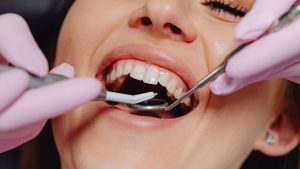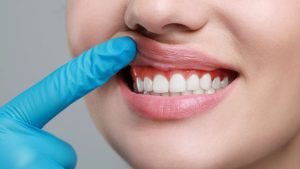Six Things to Know Before Choosing a Toothbrush
When you choose a toothbrush, consider the bristle softness, the handle comfort, and the head size. Each factor plays a crucial role in maintaining your oral health and enhancing your brushing experience.
You might wonder about the benefits of electric versus manual options or how to tailor your choice to fit your unique needs. Understanding these elements can make a significant difference in your daily routine. So, what should you prioritize to ensure you’re making the right choice?
1. Importance of Soft Bristles
Soft bristles are crucial for protecting your teeth and gums while ensuring effective cleaning. When choosing a toothbrush, consider the materials used in the bristles and their density; softer bristles flex better and adapt to your tooth and gum contours, minimizing irritation. An ergonomic design can enhance your grip, allowing for better control during brushing. Plus, color preferences can make brushing feel more personal and enjoyable. Don’t forget about travel toothbrushes; look for compact options with soft bristles that maintain quality care. By prioritizing soft bristles in your selection, you’ll reduce the risk of enamel wear and gum damage, promoting long-term oral health. It’s a small change that can make a big difference in your routine.2. Benefits of Electric Toothbrushes
Electric toothbrushes offer significant benefits, improving your oral care routine with advanced cleaning technology that ensures a more thorough and effective clean. With superior cleaning efficiency, these brushes excel at plaque removal compared to manual options, significantly reducing your risk of cavities and gum disease. The rotating or oscillating bristle heads provide consistent pressure and coverage, improving your overall dental health. Additionally, many electric toothbrushes feature built-in timers to help you brush for the recommended two minutes, promoting better habits. The user experience is often more enjoyable, especially for those with limited dexterity.3. Key Factors for Selection
When selecting a toothbrush, consider key factors like size, bristle type, and handle design to ensure it meets your specific oral care needs. First, choose the right size; a smaller head helps you reach all areas of your mouth easily. Opt for soft bristles with appropriate bristle density to prevent damage to your gums. Handle length is also important—pick one that feels comfortable and allows for a good grip. Don’t forget about toothbrush materials; some are more durable than others. If you travel often, consider compact travel toothbrushes that fit easily in your bag. Lastly, color preferences can make brushing more enjoyable, so choose one that appeals to you!4. Customizing Your Choice
Tailoring your toothbrush choice to your specific dental needs can significantly enhance your oral hygiene routine. Consider the toothbrush materials; if you’re eco-conscious, look for eco-friendly options that minimize plastic waste. If you travel frequently, invest in a compact travel toothbrush that fits easily in your bag. For your little ones, kids’ toothbrushes come in fun designs and sizes that encourage good habits. Think about the toothbrush designs that best suit your grip and brushing technique, whether you prefer a manual or electric option. Additionally, if you have specific dental concerns, explore toothbrushes with features like angled bristles or tongue cleaners to meet your unique requirements effectively. Customize your choice for optimal results!5. Proper Maintenance Techniques
Proper toothbrush maintenance ensures its effectiveness in keeping teeth and gums healthy. After each use, rinse the bristles thoroughly to remove toothpaste and debris. Store your toothbrush upright in a well-ventilated area to air dry completely, preventing bacteria growth. If you’re using a travel toothbrush, remember to keep it clean and dry during your trips. Adopting proper cleaning techniques is essential, especially if you have soft or hard bristle toothbrushes, as the bristle hardness can impact cleaning efficiency. Aim to brush at least twice a day, ensuring consistent brushing frequency. By following these maintenance tips, you’ll maximize your toothbrush’s longevity and effectiveness in your oral care routine.6. When to Replace Your Toothbrush
You should replace your toothbrush every 3-4 months, or sooner if the bristles become frayed. The toothbrush lifespan is crucial for maintaining effective oral hygiene. As bristle wear occurs, your toothbrush loses its ability to clean effectively, increasing the risk of plaque buildup and cavities. If you’ve been sick, replace your toothbrush immediately to minimize infection risks. Your brushing frequency also matters; those who brush more often may need to replace their toothbrush sooner. Proper toothbrush storage is key—keep it upright in a well-ventilated area to prevent bacteria growth. Regularly checking your toothbrush for signs of wear can help ensure you’re always using a tool that promotes good dental health.Brighten Your Smile with Hand Family Dentistry
At Hand Family Dentistry, we understand that a healthy smile begins with proper oral care, including the right toothbrush choice. Our team of dedicated professionals is here to provide you with comprehensive general and cosmetic dental services tailored to meet your needs. Whether you require routine check-ups or more advanced cosmetic procedures, we’re committed to helping you achieve optimal oral health and a radiant smile. Schedule an appointment today, and let’s partner with you on your journey to a healthier, more confident you!
Return to the home page to learn more about the Fort Myers dentist.


